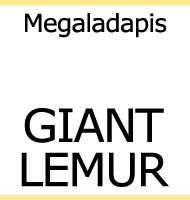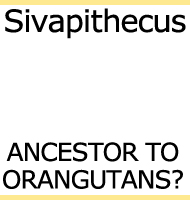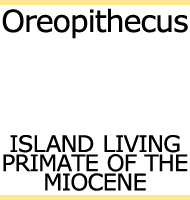


Hadropithecus
Name:
Hadropithecus
(Stout ape).
Phonetic: Had-roe-pif-e-kus.
Named By: Ludwig Lorenz von Liburnau - 1899.
Synonyms: Pithecodon sikorae.
Classification: Chordata, Mammalia, Primates,
Strepsirrhini, Lemuriformes, Archaeolemuridae.
Species: H. stenognathus
(type).
Diet: Herbivore.
Size: Uncertain due to lack of remains, but
weight estimates range between 27 and 35 kilograms.
Known locations: Madagascar.
Time period: Holocene up until about 444 -
772 CE.
Fossil representation: Sub fossils of the skull,
jaw and some post cranial remains.
One
of the monkey lemurs from Madagascar, Hadropithecus
is often
described as being similar to its relative Archaeolemur
in behaviour
and lifestyle. Hadropithecus was a powerfully
built lemur that seems
to have been best adapted to a cursorial life on the ground. Lemurs
as we know them today usually have long arms and hands for reaching out
and grasping around tree branches, but the arms and hands of
Hadropithecus were proportionately much shorter than
these arboreal
forms. These shorter limbs would have been more efficient for ground
locomotion, but they may have meant that Hadropithecus
spent most if
not all of its time on the ground. On the ground, Hadropithecus
would have been able to scavenge seeds that had fallen from higher
growing plant. These seeds would have likely been covered in tough
husks to protect them, but this does not seem to have been a problem
for Hadropithecus since the robust teeth would have
easily sheared
through the husks to reveal the highly nutritious contents.
Hadropithecus has also been considered to have been
a grazer, but a
2008 study by Ryan et al suggests a greater reliance upon eating
hard foods like seeds.
The
dental formula of Hadropithecus reads as 2.1.3.3
for the upper jaw
and 1.1.3.3 for the lower jaw. For anyone who is not familiar
with how to read a dental formula, the numbers correspond to the
numbers of specific kinds of teeth in one half of the jaw. The first
number is for incisors, the second for canines, third for premolars
and fourth for molars. So with this in mind Hadropithecus
had two
incisors, one canine, three premolars and three molars in one
half of the upper jaw, and one incisor, one canine, three
premolars and three molars in the one half of the lower jaw. To find
the total number of teeth in the mouth of Hadropithecus
you just have
to add up these two formulas and then multiply the result by two.
This means that one half of the upper jaw had nine teeth, one half
of the lower jaw had eight teeth and these combine to make seventeen
teeth. You then multiply this figure by two, which is akin to
adding the second halves of the upper and lower jaws to give you a
total of thirty four teeth in the mouth. This example explains
Hadropithecus, but it’s worthwhile knowing how to
read dental
formulas since they form a very big part in the study of prehistoric
mammals.
Like
with much of the Madagascan fauna of the Holocene, and particularly
ground lemurs, Hadropithecus seems to have gone
extinct not long
after the first humans colonised Madagascar. Aside from competition
from new animals being introduced to the land, habitat loss caused by
humans would have also contributed to the demise of lemurs like
Hadropithecus.
Further reading
- A reconstruction of the Vienna skull of Hadropithecus
stenognathus, T. M. Ryan, D. A. Burney, L.
R.
Godfrey, U. B. Gohlich, W. L. Jungers, N. Vasey,
Ramilisonina, A. Walker & G. W. Weber - 2008.
- New discoveries of skeletal elements of Hadropithecus
stenognathus
from Andrahomana Cave, southeastern Madagascar, L. R. Godfrey,
W. L. Jungers, D. A. Burney, N. Vasey, Ramilisonina,
W. Wheeler, P. Lemelin, L. J. Shapiro, G. T.
Schwatrz, S. J. King, M. F. Ramarolahy, L. L.
Raharivony & G. F. N. Randria - 2006.
----------------------------------------------------------------------------
Random favourites
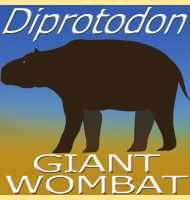 |
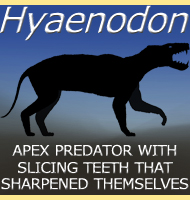 |
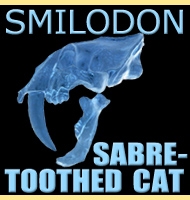 |
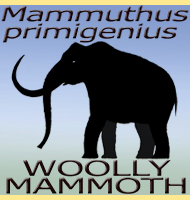 |
